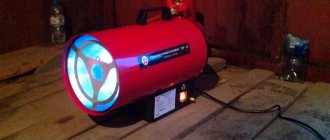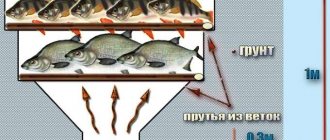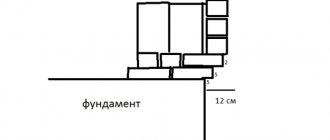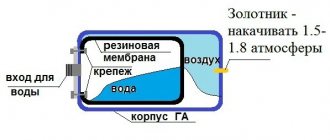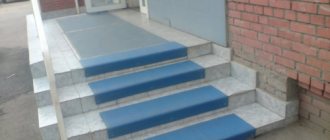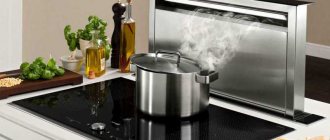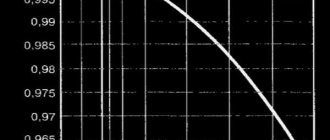When forming the microclimate in a room, heat loss is first taken into account. High-quality double-glazed windows with several sealing contours will help prevent the penetration of cold through windows, and insulation of the roof and walls - through load-bearing structural elements. But what about the front door? After all, when it opens, cold air will inevitably penetrate from outside.
This problem is especially relevant in premises where it is not possible to organize a vestibule or veranda, as well as in public places - shops, shopping centers - where the door either opens often or does not close at all, in order to make the entrance to potential customers as convenient as possible. In such cases, a thermal curtain comes to the rescue.
What is the point of installing such a device?
A thermal curtain is a device that is installed in the area of the entrance door or gate and creates an air flow parallel to the doorway. Thanks to this, cold masses coming into the room from outside are cut off. If the air stream is heated inside the device, it serves as a more effective barrier to the cool outdoor climate.
Expert opinion
Torsunov Pavel Maksimovich
Even without heating, the air flow from the curtain creates a barrier to the movement of heat and cold. And in the summer, a curtain with the heating element turned off can cut off dust and small insects and keep out the heat, that is, work in the opposite way.
How to choose a thermal curtain for a vestibule
When choosing a suitable device model, not only overall dimensions are taken into account, but also power and energy consumption, which will directly determine the financial costs of maintenance. The device must provide passage protection along the entire perimeter, so before purchasing you should carefully find out the height and width of the curtain.
Most often, thermal curtains for vestibules are represented by electric models with heating elements and STICCH elements, which, unlike water curtains, are more convenient to maintain and operate.
The presence of a remote control is a plus, as it makes it possible to control the device more conveniently in all respects. To form an air curtain as efficiently as possible, install the device directly above the passage into the vestibule.
Design
The thermal curtain most often has an elongated shape. The body is made of thin-walled metal or plastic. There are two groups of holes in the housing: through one, air is sucked into the device from the room, and through the other it comes out. A continuous flow of air flowing through the body of the device is provided by a drum-type fan - the same as in air conditioners.
A heating element is located immediately behind the entrance grille. Thanks to it, the air is heated to the desired temperature. The operation of the thermal curtain is regulated by a control unit - fully electronic or electronic-mechanical. Some devices have a remote control function via an infrared signal or radio.
Main characteristics
There are systems operating from various heat sources. There are electric and water curtains. The second type is more economical to use, since heating occurs due to hot water.
Such equipment has many advantages, including:
- Reliable protection of the room from heat loss.
- Creating a special barrier that prevents dust, various insects and exhaust gases from entering the house.
- Preventing cold air from entering the home.
- Temperature optimization.
- Additional heating.
- The ability to keep the door in the house open.
- Creating a cool and comfortable temperature in hot summer conditions.
- Economical.
Device classification
Although the physical principle of operation of a thermal curtain is the same, the design of the devices can differ significantly. There are a number of reasons why devices are divided into several classes.
Location
In order to most effectively cut off cold air coming from the street, the two most common schemes are used:
- Horizontally, above the entrance opening . The air flow is directed from top to bottom, providing effective air cut-off.
- Vertically, on the side of the entrance opening . The double system works most effectively when the thermal curtain modules are placed on both sides of the door. In height, they must completely block the opening, otherwise there will be a channel at the bottom or top for the passage of cold air
Size
Size usually refers to the width of the device. With an upper horizontal position, the device pumping air through itself for heating should not be narrower than the width of the entrance door opening. Manufacturers and installers recommend choosing equipment even with a small margin in terms of dimensions. Devices 60 cm to 1.2 m wide are considered standard. For wide openings in shops and supermarkets, as well as for garages, boxes and warehouses with large gates, thermal curtains are made from several modules - units that are placed in a row.
In household models, the width of the fan drum usually does not exceed 800 mm. Larger elements usually vibrate a lot and require improved suspension, which is expensive and installed in industrial air curtains. Sometimes manufacturers use a trick - they place the motor drive in the middle, and make a double fan and place it along the edges of the case. In standard models, the blowing nozzle system is organized so that the air flow is distributed over a large width
Heater type
The fundamental difference between different types of thermal curtains lies in the type of heating element. At the moment, there are three types, the use of which is determined by the purpose of the device and its operating conditions:
- Gas . The air is heated using a gas nozzle, and the fan doses the air supply so as not to blow out the torch. Gas heaters for thermal curtains are used only in factory workshops and production. Firstly, they require compliance with detailed safety precautions, and secondly, they place special demands on the ventilation of the room, as they create combustion products. In shops, houses and apartments, such conditions cannot always be met.
- Mermen . The heating element is a radiator with a mesh jacket through which hot water taken from the heating circuit is pumped. The system is highly economical and has low energy consumption, but is difficult to install and design. In addition, most retail premises do not have water heating circuits and there is simply nowhere to connect such a thermal curtain.
- Electrical . Despite the high energy consumption, this type of thermoelements is the most in demand and popular, because the electrical network is everywhere. Such devices are fireproof, as they have built-in protection against overheating, and also do not require any special conditions during installation and operation. Thermal protection, powered only from the outlet, is divided into two types according to the nature of the thermoelement:
| Type of electric heater | Spiral | with heating element |
| Design | Spiral made of nichrome wire in a sheath | The metal body of the heating tube is filled with quartz sand, the heating spiral is in a ceramic jacket |
| Advantages | Simplicity and low cost, easy to find a replacement | Uniform heat distribution, dries the air slightly |
| Flaws | Dries out the air a lot | Costs more, you need to look for a replacement |
What kind of thermal curtain do you use?
VerticalHorizontal
Power
Electric models consume quite a lot, because energy is spent both on heating the air and pumping it through the continuous rotation of the fan. The total power of the device can reach several kilowatts. As a rule, one universal module consumes from 2 to 9 kW of electricity. More powerful devices are already classified as industrial. They are much more efficient and often have a 380 volt connection.
Performance
In order to effectively cut off the cold environment that tends to penetrate into the room, the air must exit the ventilation grille of the thermal curtain at a speed that does not fall below 2.5 m/s near the floor with the top position or at the opposite door jamb with the side position. This means that a certain volume of air must be pumped through more efficient devices to achieve this indicator.
If this volume is too small, then the device will show low efficiency; if it is too large, the energy consumption will unjustifiably increase. According to average calculations, for a standard doorway 2 m high and 1 m wide, a capacity of 700 to 900 cubic meters of air per hour will be necessary and sufficient.
Unique advantages of the system
Water thermal curtains have such design features that give them a number of advantages over electric heating devices:
- Less energy consumption with equal heat transfer. Cost savings can reach 30%.
- Possibility of installation in case of technical difficulties: insufficient power of the electrical network, large opening height (up to 12 meters).
- Convenient maintenance due to the simplicity of the design.
- Maintaining a stable temperature in the room and equalizing the temperature difference in the ceiling area and at the level of human growth - this makes it more comfortable for people to stay in the room and creates favorable conditions for storing any goods.
- Neutralization of drafts, which leads to a reduction in the risk of colds.
- Protection against the entry of insects, small animals, and dust into the building.
- Can be used as an air conditioner if the coolant circulation system is turned off.
A water curtain creates additional convenience at car service stations, car washes, checkpoints and public catering outlets, since thanks to it the front door can always remain open. In addition, it not only creates insulating protection, but also serves as a heater for the warehouse vestibule.
The scope of its application depends on the functionality of the equipment: from air screening of warehouses and hangars to preserving the interior of an office or shopping center from street dust.
Control
The water curtains are controlled by two switches, which can be mechanical or electrified.
The fan - which can be two-speed - and the heating elements are switched separately. The control system can be equipped with additional 2 (3)-stage heating power regulators. If the fan is two-speed, then its speed is also regulated by the remote control.
If a thermostat is installed, the equipment may automatically turn off when the set temperature value is reached.
The control panel, depending on the model, has the following varieties:
- built-in – for small curtains that are installed above door or window openings in small rooms;
- wired – in large rooms where control of the built-in button is difficult, and the remote control can be placed in a convenient place.
In warehouses and hangars, limit switches are used, which bring the system into operation only if the door or gate is open.
Main element
The main design element is a radial fan, which is necessary to create the necessary air flow. Such a turbine must be single and located along the entire length of the device. It helps create an even flow. The engine is mounted on the side of it.
However, manufacturers often decide to place the engine in the center, with small turbines on its sides. The reason for this arrangement of elements is the difficulty of manufacturing a turbine with a length exceeding 800 mm. How effective is this installation method? Of course, such a simplified curtain will cost less, but there will be a “dip” in the central part of the air flow, which significantly reduces the protective properties. In addition, the heating elements will be blown unevenly, and this leads to their earlier failure.
